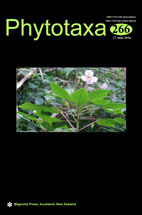Abstract
The itinerary of the German botanist and explorer Ernst Heinrich Georg Ule (1854–1915) in central Bahia state, Brazil, is reconstructed from published records, specimen label data and unpublished correspondence. Emphasis is given to his collecting localities in November 1906 in the campo rupestre of the Serra do Sincorá, Chapada Diamantina, where he collected type specimens of species from many genera and families. The available information suggests that his collections were made over a wide area along the western side of the Serra, from Camulengo in the south to near Mucugê in the north. Among them is one of the syntypes of Anthurium petrophilum (Araceae), recently re-discovered at the Herbarium Hamburgense (HBG). Ule also collected the other syntype in September 1906 at Maracás, a distinct inselberg highland to the east. Since recent morphological and molecular studies have shown populations from the two areas to be taxonomically distinct, the duplicate at the Berlin Botanical Museum (B) of the Maracás collection is here proposed as the lectotype, since it is the only surviving syntype known to have been seen by K. Krause, the author of the name.

